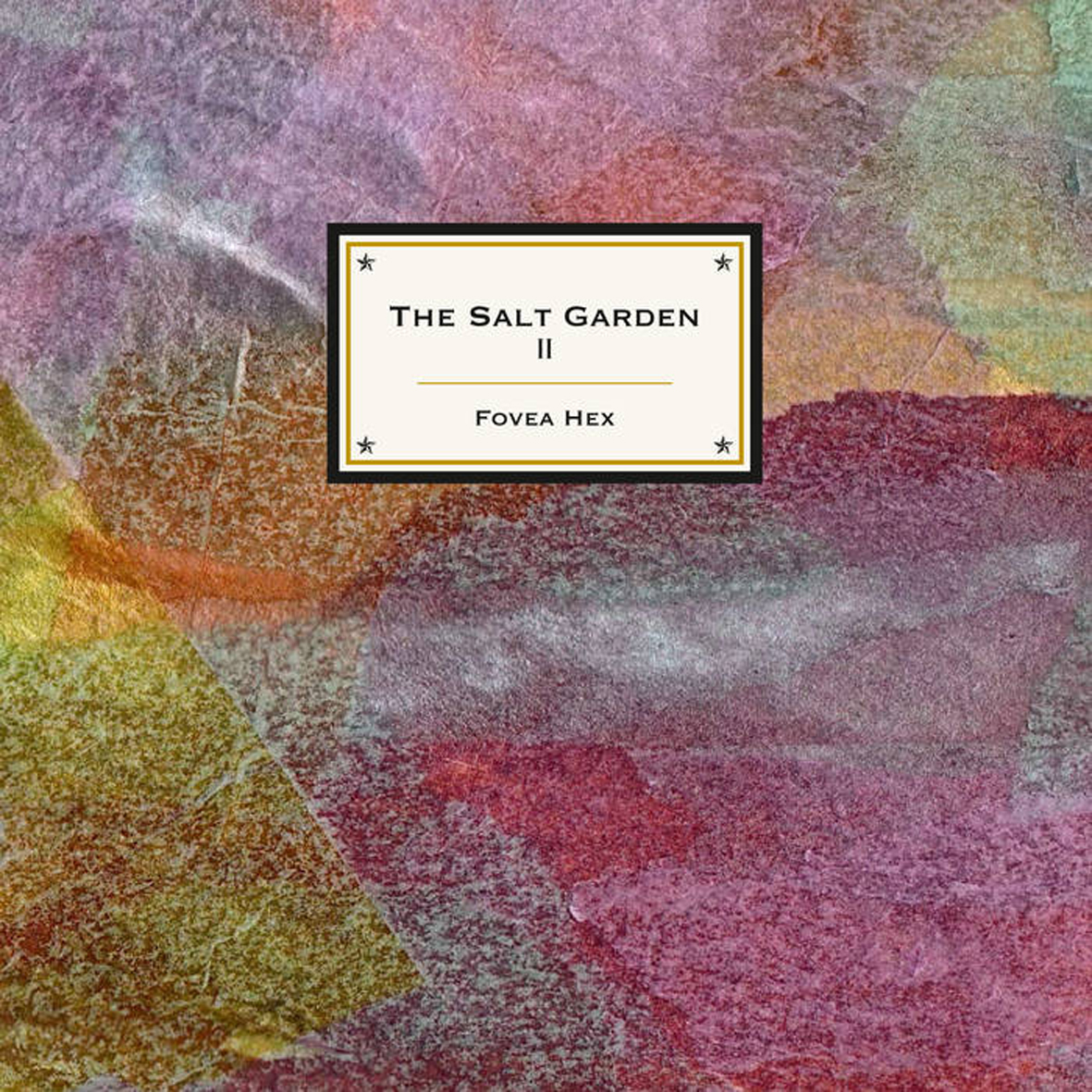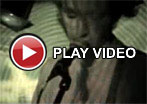Fovea Hex, "The Salt Garden II"
 Clodagh Simonds and her impressive coterie of collaborators have returned for the much-anticipated second installment of the planned Salt Garden trilogy.  In a broad sense, this latest EP is a clear continuation of its predecessor, consisting of three timeless and drone-informed pieces of sublime and Siren-esque choral beauty and an instrumental coda.  However, this release also marks an intriguing evolution upon the aesthetic of the first Salt Garden, opting for a more understated and unadorned approach.  As such, there is not much here that offers quite the intensity and immediacy of "The Golden Sun" or "The Undone Mother," but the compensation is that Simonds has further distilled her vision into something more naked and pure, eschewing ornamentation and orchestration to shift more of the heavy lifting to her voice and her words.  They can certainly handle it.
Clodagh Simonds and her impressive coterie of collaborators have returned for the much-anticipated second installment of the planned Salt Garden trilogy.  In a broad sense, this latest EP is a clear continuation of its predecessor, consisting of three timeless and drone-informed pieces of sublime and Siren-esque choral beauty and an instrumental coda.  However, this release also marks an intriguing evolution upon the aesthetic of the first Salt Garden, opting for a more understated and unadorned approach.  As such, there is not much here that offers quite the intensity and immediacy of "The Golden Sun" or "The Undone Mother," but the compensation is that Simonds has further distilled her vision into something more naked and pure, eschewing ornamentation and orchestration to shift more of the heavy lifting to her voice and her words.  They can certainly handle it.
The EP opens on an appropriately minimal note with "You Were There," as Simonds' vocals are initially backed by little more than the sustained whine of a wet finger around a glass and a slow-moving cello motif from Kate Ellis.  As it progresses, however, the piece gradually becomes more fleshed-out, as a cooing backdrop of backing vocals appears along with a burbling electronic pulse.  Later, it blossoms still further into a "quiet storm" crescendo of sorts, as an understated and rolling undercurrent of percussion begins to propel the piece along while multiple layers of vocals begin to swirl dreamily together.  That transition provides a satisfying dynamic arc to the piece, but the real beauty lies almost entirely in the central vocal melody, which has a kind of magnetic, ritualistic intensity that arguably renders the accompanying music almost superfluous.  That is a curious recurring theme throughout the record, as the bulk of these songs would be every bit as good if nearly all of the music was excised.  On its face, that may not seem like a significant observation, but it is a lot more striking when the collaborators on-hand include folks like Brian Eno and Colin Potter.  I like the music just fine, of course, but the clarity and power of Simonds' vocals unavoidably have a bit of an eclipsing effect on absolutely everything around them.
My favorite piece is the following "Chained," which takes a bit of a more mysterious and haunting turn ("if you walk away to find a quiet place, they will track you down by the sand").  Again the music is quite subtle (a subdued burble of synth and some dark piano chords), but Simonds' eerily harmonized and poetic vocals are absolutely gripping.  While a few rays of light are provided by the pizzicato strings of Ellis and Cora Venus Lunny, the overall effect is that of a somnambulant priestess languorously intoning a tale that only grows deeper, darker, and more cryptic as it progresses.  It is quite a deceptively heavy piece.  As a result, the quietly lovely and hopeful "All Those Signs" comes as quite a surprise in its wake.  Featuring the largest ensemble of any of the four pieces, it veers unexpectedly close to conventional prettiness on its surface, resembling a Celtic-sounding variation on an old spiritual.  At its core, however, it is a bittersweet meditation on the fragility of life on Earth.When it is at its simplest, it is quite an achingly beautiful piece, but I have some mixed feelings about its unusual structure and mass choir crescendo ("Long may we cheer and sing!Long may our floodlights shine!"), as it crosses the blurry line separating "hymn-like" from "maybe a bit too hymn-like."That said, I have something of an irrational antipathy towards major keys and expressions of human joy, so those final heavenward swells may resonate a lot more with less conspicuously flawed listeners.  The same is probably true of the closing instrumental "Piano Fields 1," a gently drifting and pastoral haze of tender piano and Colin Potter's electronics.  I can certainly see the appeal of both, but Fovea Hex lives and dies by Clodagh's vocals (for me, at least), so diluting that essence is rarely a step in the right direction, unless it is to add variety to a more expansive and ambitious release.
While anything new from Fovea Hex is always extremely welcome, The Salt Garden II admittedly suffers a bit from feeling somewhat insubstantial (the four pieces add up to a very lean 20 minutes).  As such, I am a bit envious of the fans who were smart enough to pounce on the pre-order version, which is expanded with a blearily droning and oft-gorgeous 20-minute reinterpretation of "All Those Signs" by Abul Mogard.  Someone should commission him to be a full-time Fovea Hex remixer, as he managed to distill and isolate absolutely everything that I liked about that piece and expand it into a sublime and slow-burning epic as long as the entire EP.  My sole other quibble is also brevity-related, as I am a bit perplexed by the recurring inclusion of an instrumental coda at the end of each installment.  It makes sense from a sequencing standpoint, but it takes up valuable real estate on a vinyl 10" that could be far more meaningfully used for another vocal piece.  Of course, the counterpoint is simply that Simonds works quite slowly, so it makes perfect sense for Fovea Hex to release a slow trickle of tantalizing smaller works rather than remaining silent for years and years as a full album gradually takes shape.  I can happily accept that as a fundamental concession of Fovea Hex fandom, which is something that I continue to embrace.This has always been a wonderful and unique project and this latest EP continues that trend beautifully.  Curious new listeners would probably be better served by investigating the somewhat stronger first installment before this one, but longtime fans will undoubtedly appreciate how this latest dispatch deepens and further refines The Salt Garden's otherworldly spell.
Samples:
 



